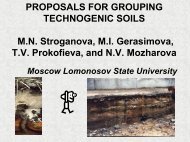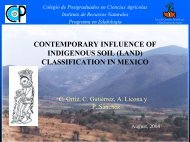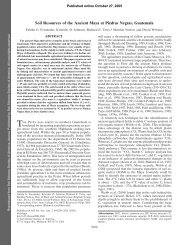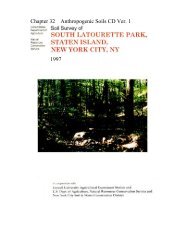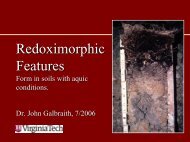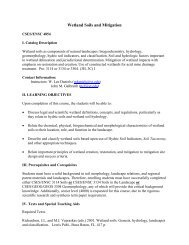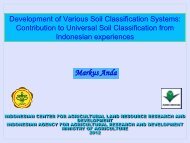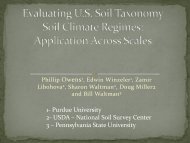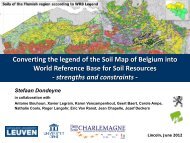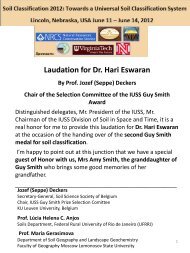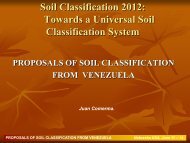Nebraska Soils Field Trip - Virginia Tech
Nebraska Soils Field Trip - Virginia Tech
Nebraska Soils Field Trip - Virginia Tech
You also want an ePaper? Increase the reach of your titles
YUMPU automatically turns print PDFs into web optimized ePapers that Google loves.
4th IUSS Soil Classification Conference <strong>Field</strong> Tour Guidebook<br />
Selected Sections from<br />
Major Land Resource Area (MLRA)<br />
Land Resource Regions and Major Land Resource Areas of the United States, the<br />
Caribbean, and the Pacific Basin<br />
Location of Land Resource Region M<br />
(U.S. Department of Agriculture Handbook 296, 2006)<br />
M—Central Feed Grains and Livestock Region<br />
This region is in Iowa (20 percent), Illinois (18 percent), Missouri (13 percent), Minnesota (11 percent),<br />
Indiana (9 percent), Kansas (6 percent), <strong>Nebraska</strong> (6 percent), Ohio (6 percent), Wisconsin (4 percent),<br />
South Dakota (4 percent), Oklahoma (2 percent), and Michigan (1 percent). Also, very small parts are in<br />
North Dakota and Kentucky. The region makes up 282,450 square miles (731,905 square kilometers).<br />
Typically, the land surface is a nearly level to gently sloping, dissected glaciated plain. The average<br />
annual precipitation is typically 32 to 39 inches (815 to 990 millimeters), but it ranges from 19 to 48 inches<br />
(485 to 1,220 millimeters), increasing from north to south. Most of the precipitation occurs during the<br />
growing season. In most of the region, the average annual temperature is 47 to 53 degrees F (8 to 12<br />
degrees C), but it ranges from 38 to 62 degrees F (4 to 17 degrees C), increasing from north to south.<br />
The freeze-free period generally is 170 to 210 days. It increases in length from north to south.<br />
19



